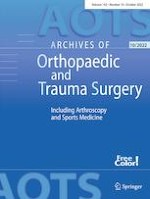Erschienen in:

26.11.2021 | Arthroscopy and Sports Medicine
The natural history of alpha angle in the last seventeen centuries
verfasst von:
Roberto Seijas, Albert Pérez, David Barastegui, Emili Revilla, Carlos López de Celis, Jordi Català
Erschienen in:
Archives of Orthopaedic and Trauma Surgery
|
Ausgabe 10/2022
Einloggen, um Zugang zu erhalten
Abstract
Introduction
Hip osteoarthritis is one of the most important and debilitating diseases affecting thousands of people all over the world. On the other hand, femoroacetabular impingement (FAI) is one of the known important causes of hip osteoarthritis. Cam deformity frequently presents in FAI showing an increased alpha angle. Increased alpha angle has been observed among young patients involved in demanding physical activities such as in sports (40–60%), whereas among the non-athletic population, increased alpha angle was observed in 15–20%. Although femoroacetabular pathology has been described over the recent years, it is not possible to determine when the angle increase actually begins prior to diagnosis. The aim of our study is to evaluate the femoral alpha angle in different human femurs in different civilization eras in West Mediterranean area.
Materials and methods
Available ancient femurs were selected from the Collection Center belonging to the archeological archives (ancient necropolis) from the fourth, fourteenth and eighteenth centuries. A comparison of the alpha angle was made of the measurements from the different groups accompanied by a sample of present-day femurs from the radiology database of CT scans. Data from 243 femoral bones were collected, 50 of which from the fourth century, 26 from the fourteenth century, 68 from the eighteenth century, and 99 femurs from the 20/twenty-first century.
Results
Alpha angles in all historical samples showed pathological values (> 55º) up to a maximum of 11.5% of the cases. Meanwhile, the actual series showed pathological alpha angle in 60.1% of the cases with statistical significant differences.
Conclusion
The studied femurs of the western Mediterranean region from the fourth, fourteenth and eighteenth centuries showed pathological alpha angles in a smaller proportion than the actual sample.
Level of evidence
Level III, retrospective studies.